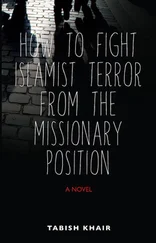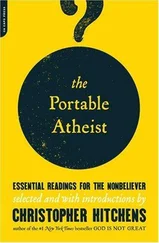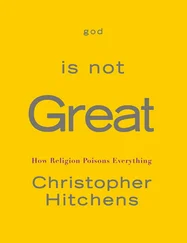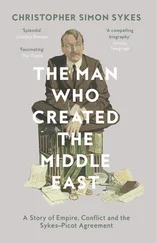One day Sister Frances, from the city of Agra, phoned Mother Teresa asking for urgent help.
‘Mother, I need 50,000 rupees. Over here there is a crying and urgent need to start a house for the children.’
Mother Teresa replied: ‘That is too much, my daughter, I will call you back; for the moment we have nothing… ’ A short time later the phone rang again. It was a press agency. ‘Mother Teresa? This is the editor of the agency. The Philippine government has just awarded you the Magsaysay Prize. Heartfelt compliments! It involves a considerable sum.’
Mother Teresa: ‘Thanks for letting me know.’
The editor: What do you plan on doing with the 50,000 rupees from the prize?’
Mother Teresa: ‘What did you say? 50,000 rupees? I think the Lord wants us to build a home for children at Agra.’
As her television reputation spread, Mother Teresa found herself accepting more and more awards and benefactions. The Indian government invested her with the Prize of the Miraculous Lotus. In 1971 the Vatican gave her the John XXIII Prize for Peace (Dr Gjergji hastens to inform us that on this occasion ‘the prize winner herself had come to the Vatican on the city bus, and was wearing her Indian sari, worth about one dollar’. If true, this was ostentatious of her.) In Boston in the same year she accepted the ‘Good Samaritan’ award, again with many words of self-deprecation. Then straight to Washington, to receive the John F. Kennedy award on 16 October. The next year, with the auction in full swing, the government of India improved on its relatively lowly Miraculous Lotus prize and gave her a larger one, in a ceremony at which Indira Gandhi publicly wept. In 1973 it was Prince Philip’s turn to make an emotional demonstration, which he did while presenting the Templeton Prize ‘for the promotion of faith in the world’. In the presence of his wife, who holds the title of ‘Defender of the Faith’ against all the works of Rome and who heads a family which is barred from making a marriage to a Roman Catholic, the royal consort handed over £34,000. The United Nations Food and Agriculture Organization went one better two years later by striking a special medal with the goddess Ceres brandishing a stalk of wheat at Mother Teresa and, on the obverse, the inscription ‘Food For All: Holy Year 1975’. Revenue from the sale of the medals went to the Missionaries of Charity. It was only a step up from this to the Albert Schweitzer Prize, and then to yet another recognition from the Indian government — this time an honorary degree presented by Indira Gandhi herself. (The future patroness of compulsory sterilization had become, in the mean time, head of the government.) In March 1979, the International Baizan Prize, worth a quarter of a million lire, was presented by the president of Italy. The Pope, by then John Paul II, took the opportunity of her visit to receive her in private audience. All things thereby pressed toward the ultimate event of the prize-giving machine, which was to make Mother Teresa the Nobel Laureate for Peace and to invest her with the prize and the cheque in December 1979.
Nobody has troubled to total the amount of prize money received from governments and quasi-government organizations by the Missionaries of Charity, and nobody has ever asked what became of the funds. It is safe to say, however, that if all the money had been used on one project it would have been possible, say, to give Calcutta the finest teaching hospital in the entire Third World. That such is neither Mother Teresa’s intention nor her desire may be inferred from the Muggeridge incident. It may also be inferred from her preference for spreading the money thin and for devoting it to religious and missionary work rather than the sustained relief of deprivation. In any event, if she is claiming that the order does not solicit money from the rich and powerful, or accept it from them, this is easily shown to be false.
The apologists generally claim that Mother Teresa is too innocent to count money or to take the measure of those who offer it, or to reckon that they obtain some benefit from their supposed generosity in the form of virtue-by-association. Forgetting for a moment her boast that she does not accept eye-of-the-needle subventions in the first place, we might agree that this argument had merit in the case of the late Robert Maxwell. Mr Maxwell inveigled a not-unwilling Mother Teresa into a fund-raising scheme run by his newspaper group, and then, it seems (having got her to join him in some remarkable publicity photographs), he made off with the money. But Maxwell did succeed in fooling some very experienced and unsentimental people in his day, and although it might be asked how Mother Teresa had time to spare for such a wicked and greedy man, it can still be argued with some degree of plausibility that she was a blameless party to his cynical manipulations.
However, it is difficult, if not impossible, to assert this in the case of Mr Charles Keating. Keating is now serving a ten-year sentence for his part in the Savings and Loan scandal — undoubtedly one of the greatest frauds in American history. In the early 1980s, during the booming, deregulated years of Reagan’s first term, Keating, among other operators, mounted a sustained and criminal assault on the deposits of America’s small investors. His methods were those of the false prospectus and the political bribe. (Washington vernacular still contains the expression ‘the Keating Five’, in honour of the five United States senators who did him favours while receiving vast campaign donations in the form of other people’s money.) Keating had political ambitions as well as financial ones, and as a conservative Catholic fundamentalist had served Richard Nixon as a member of a much-mocked commission to investigate the ill effects of pornography.
At the height of his success as a thief, Keating made donations (not out of his own pocket, of course) to Mother Teresa in the sum of one and a quarter million dollars. He also granted her the use of his private jet. In return, Mother Teresa allowed Keating to make use of her prestige on several important occasions and gave him a personalized crucifix which he took everywhere with him.
In 1992, after a series of political and financial crises and the most expensive bailout operation in the history of the American tax-payer, Keating was finally brought to trial. He appeared before the Superior Court in Los Angeles (his ‘Lincoln Savings and Loan’ had been a largely Californian operation) where he was heard by the later-notorious Judge Lance Ito. The trial could have only one outcome: the sentence allowable under California law.
During the course of the trial, Mother Teresa wrote to the court seeking clemency for Mr Keating. She gave no explanation of her original involvement with the defendant and offered no direct testimony mitigating his looting of the thrift industry. The letter, in its original form, appears opposite.
One is struck immediately by two things. First, though the claim about ‘free service to the poorest of the poor’ is made in almost the same words as it was made to Muggeridge, the related claim that the rich receive no quid pro quo seems to have disappeared. Then there is the astonishing artlessness of the letter, both as composed and as presented. One might think it a missive from an innocent old woman who knows nothing of cupidity and scandal, and who naively wishes to intercede for reasons of rather woolly compassion. The transcript of Mother Teresa’s highly ideological Nobel Prize speech, for example, does not read like this. It is professionally written and presented. And many of her other public interventions demonstrate a much sharper sense of the real world, even when Mother Teresa is choosing to speak on matters, such as sexuality and reproduction, where she must necessarily admit to being disqualified by inexperience.
Читать дальше











